Beans for breakfast?
The very concept can seem odd to folks who grew up in the US, Canada, or most of Europe. But globally, it’s not as weird as it sounds — or as uncommon. After all, beans are one of the most extensively used staple foods in the world.
For one thing, they’re easy to grow. Even my friends who bemoan their lack of a green thumb can reliably get a crop of beans out of their sad and undernourished garden beds.
Beans are also prolific, and they store well (as any home gardener knows, canning more green beans than they have shelves to hold jars, and drying enough beans to last until the next Ice Age).
Beans boast robust nutritional profiles, which means they’re a wonderful hunger-fighting food, especially during times of the year when other food crops are less available.
As a result, civilizations have been cultivating and valuing beans for thousands of years. And the trend is upward: Global bean consumption is expected to reach nearly 20,000 thousand metric tons by 2026. (If you’re a visual person who likes elephants, that’s about 5,000 adult African elephants.)
Plus, beans aren’t just good for people; they’re also excellent for the planet. Unlike animal-based sources of protein, beans and other legumes can take the nitrogen from the air and fix it into the soil — helping plants grow.
They’re also an important source of protein, which is a nutrient that you need every day. So why not beans for every meal — breakfast included?
In this article, we’ll look at the benefits of eating beans for breakfast. Many cultures already eat beans in this way and can provide guidance and inspiration for our own legume-rich breakfasts. We’ll take a look at some of these dishes and provide you with eight delicious recipes to try.
Why Eat Breakfast at All?

Before we talk about eating beans for breakfast, let’s get more fundamental: Why eat breakfast at all? Why not just skip it, maybe gulp some coffee to get moving, and not eat until lunchtime?
While not everyone eats breakfast, on the whole, there are proven benefits to doing so. These benefits include a lower risk of obesity and weight gain, improved glycemic control, reduced risk of type 2 diabetes, and a positive impact on cardiovascular health. What’s more, children and adolescents who consume a morning meal seem to exhibit improved cognitive performance compared to their breakfast-skipping peers.
People who eat breakfast also tend to take in more micronutrients on a daily basis than breakfast skippers. The International Breakfast Research Initiative, which is a real thing, set breakfast nutrient standards at 20–25% of daily intake recommendations.
Beans for Breakfast?
So now that we’ve established that breakfast is pretty much a good idea, let’s talk about why beans, in particular, are a model breakfast food. Beans an excellent source of both protein and healthy complex carbohydrates. And they’re rich in fiber, a nutrient that’s sorely lacking in typical industrialized diets.
For example, let’s look at the nutritional bona fides of the humble pinto bean. One hundred grams of rinsed and drained canned pinto beans provide 117 calories, 7 grams of protein, 20 grams of carbohydrates, and 7 grams of fiber.
In addition to providing healthy quantities of macronutrients, beans are micronutrient champs as well. Some beans contain nearly a full day’s worth of iron, in addition to many other vitamins and minerals. Those pinto beans, for example, provide calcium, iron, magnesium, and phosphorus, as well as the trace nutrients zinc, copper, and manganese.
If you’re interested in productivity and performance, breakfast beans are definitely your friends. Beans contain slow-digesting starch that triggers a sustained release of glucose, and, therefore, energy, throughout the day. This internal energy source can keep you satiated and keep your blood sugar balanced from morning to evening.
A Note on Bean Gas
I realize that your idea of high performance probably doesn’t include loud and smelly farts. So if beans are particularly “musical” for you, there are steps you can take to reduce their gas-producing properties.
You can soak dry beans for 24–48 hours (rinsing twice a day) before cooking them. If you’re not currently a big bean eater, you may also want to ramp your consumption up slowly, having just small amounts at first to give your microbiome time to adjust to the increased fiber.
If you want more information on cooking legumes, check out our article How to Cook Beans and Lentils from Scratch.
What Countries Eat Beans for Breakfast?
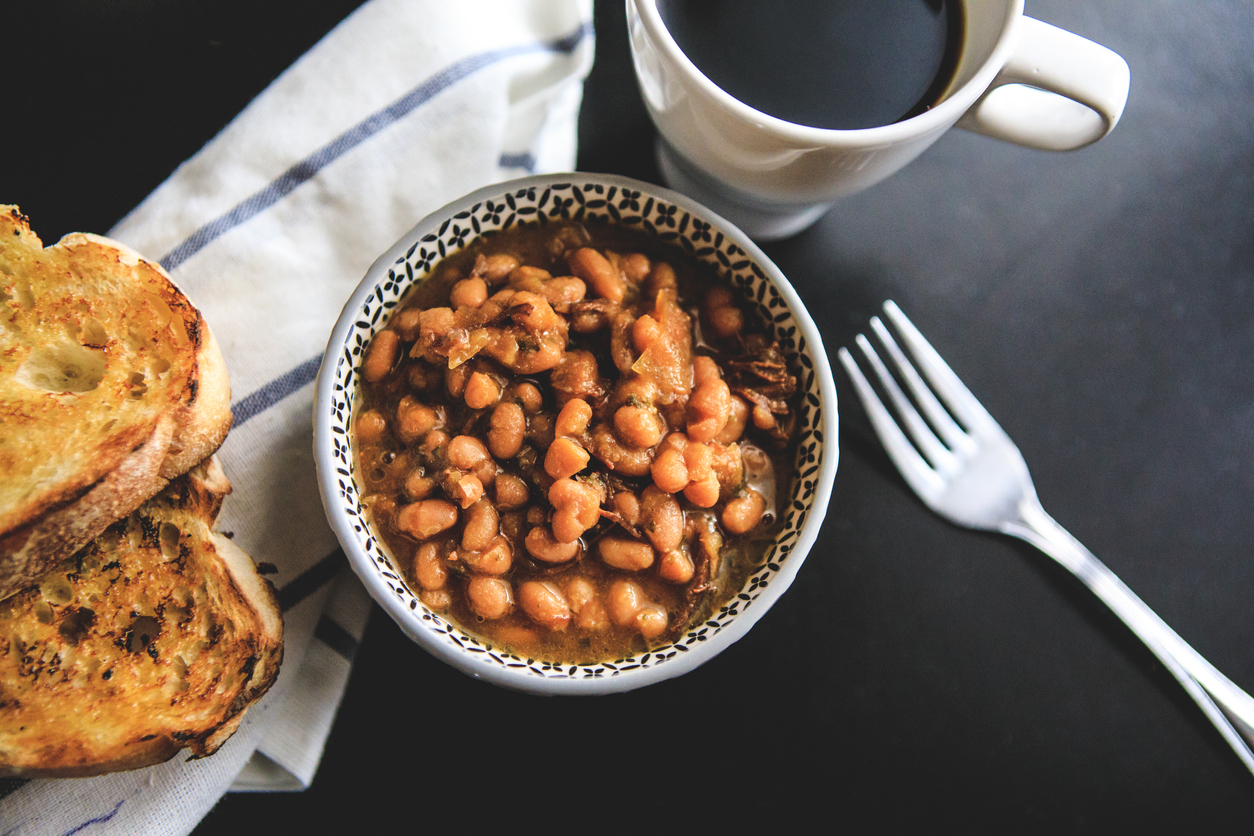
In the US and mainland Europe, eating beans for breakfast is not very common. But around the world, there are many cultures that have figured out how to enjoy legumes first thing in the morning.
Closest to Europe is the well-known British breakfast of beans on toast (also enjoyed by New Zealanders). English breakfast is another UK bean-containing meal consisting of some combination of baked beans, grilled tomatoes, and mushroom (along with, in the interest of full accuracy, bacon, eggs, sausage, black pudding, toast, marmalade, jam, and butter).
Across Asia, many cultures enjoy some form of soybean, lentil, or bean sprout with breakfast. Indonesian gado gado includes multiple different types of beans: tofu, tempeh, cooked green beans, and bean sprouts. Plus, it’s typically topped with a peanut sauce, made from the famous legume masquerading as a nut.
South Indian breakfast often includes masala dosa, the dough of which is made with lentils.
In Japan and Korea, soups are common for breakfast. Classic dishes such as miso soup and doenjang jjigae (soybean paste stew) contain miso (a fermented soybean paste) and tofu.
Beans are also a staple food at most meals in South and Central American countries. Mexican breakfasts such as chilaquiles (crumbled tortilla chips covered in salsa, cheese, and cream), huevos a la Mexicana (scrambled eggs with sautéed veggies), and huevos rancheros (fried eggs on corn tortillas) often include or are served with beans.
Southwestern and Tex-Mex cuisine in the US has adopted some of these dishes, as well as breakfast burritos or tacos, which may include beans, too.
Belize, Costa Rica, Honduras, El Salvador, and other Latin American countries also have breakfast dishes made with beans.
Africa, too, has bean-based breakfasts. In Egypt, ful medames (cooked fava beans flavored with bold spices and sesame tahini) is a popular breakfast dish. In Nigeria, moin moin (black-eyed pea pudding) and akara (moin moin that’s scooped into balls and deep-fried) are both made with bean paste.
Many Middle Eastern countries also have beans in the form of hummus (chickpeas) for breakfast and other meals.
Breakfast Recipes with Beans
Beans for breakfast, beans for dinner, beans at any time! Beans stand out as some of the most versatile and excellent plant-based ingredients for just about any dish you can imagine. Naturally, they make a fantastic choice for the first meal of the day as well! We’ve gathered recipes from around the world (and some from your own backyard) to inspire fresh ways to savor your beloved beans as the most important meal of the day!
1. Lentil Sausage Breakfast Rollup
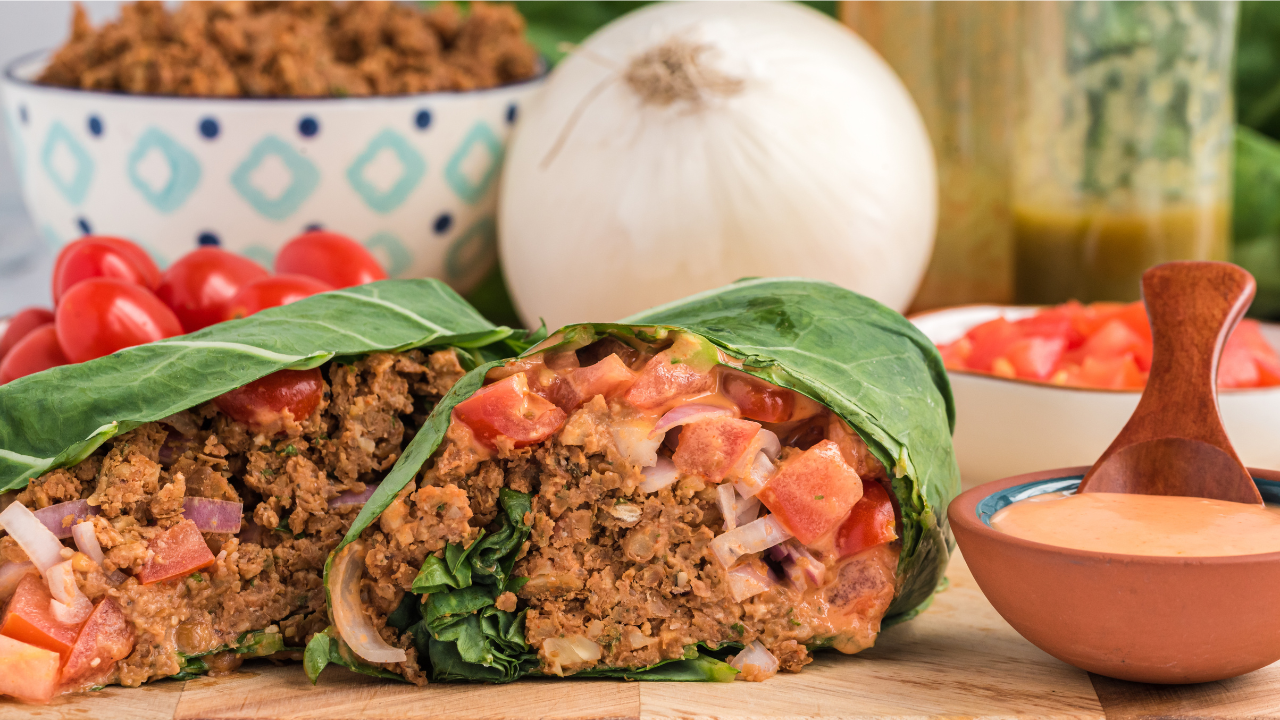
Lentils are a great go-to when crafting savory breakfast options. Thanks to their earthy flavors, when paired with the right combination of spices, they take on a robust meat flavor that makes any dish sing (especially breakfast!). Give ‘em a try in our hearty Lentil “Sausage” Breakfast Rollup. This breakfast dish is not only big on flavor, but it’s also big on nutrition. Lentils and walnuts are both packed with protein and fiber, plus walnuts are one of the best sources of plant-based omega-3 fatty acids, and are a wonderful way to kick-start your day while enjoying beans for breakfast!
2. Ful Medames
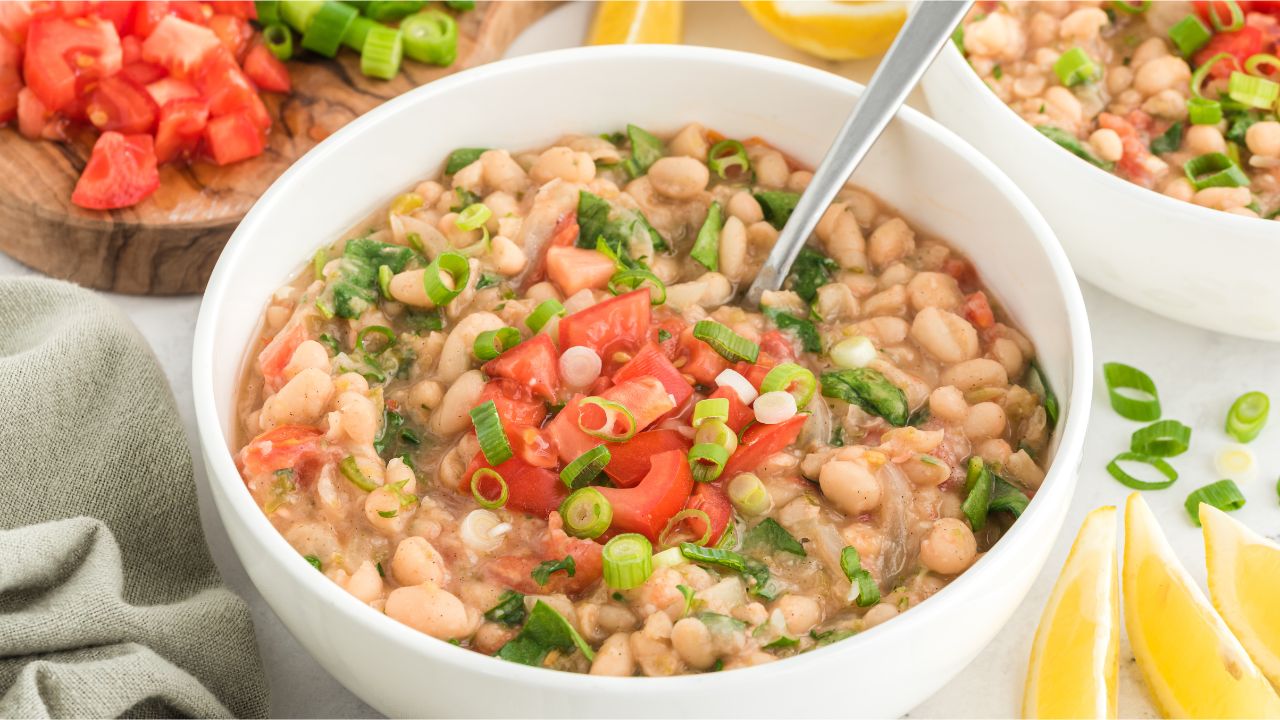
Take a trip to the rich country of Egypt with this hearty and flavor-filled Ful Medames. Fūl is a traditional breakfast offering that has been enthusiastically enjoyed for centuries (as versions of this dish date back to ancient Egypt) in many Middle Eastern households — and now you can enjoy it, too! Warm, savory fava beans, fragrant spices, fresh vegetables, and herbs create a savory, satisfying, and cozy stew that can easily replace your morning oats. Enjoy with a soft whole-grain pita, and you’ve got a bean-filled breakfast recipe that is equal parts nourishing and mouthwatering!
3. Smashed Edamame Avocado Toast
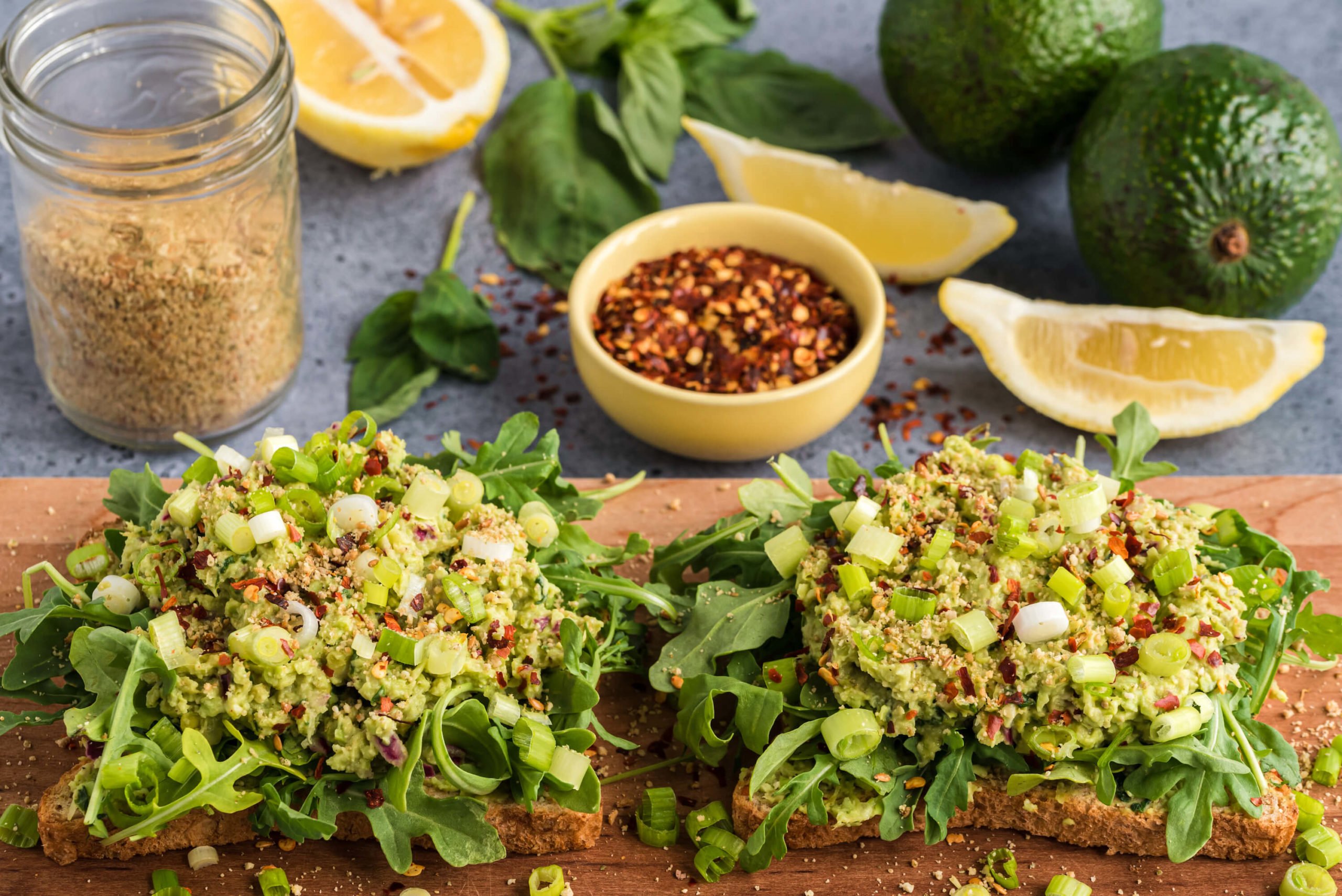
Creamy and dreamy Smashed Edamame Avocado Toast is one of the easiest ways to enjoy a refreshingly light yet bean-centric breakfast. Bright and slightly sweet edamame is mashed together with creamy avocado and topped with vibrant vegetables, herbs, and spices. What you get is a highly satisfying and craveable meal that’s perfect for any day of the week (and any time of day, too)! Plus, this scrumptious toast is packed with protein, fiber, B vitamins, healthy fats, and plenty of phytonutrients for a nutrient-dense twist on your typical breakfast fare.
4. Vegan Breakfast Crunchwrap
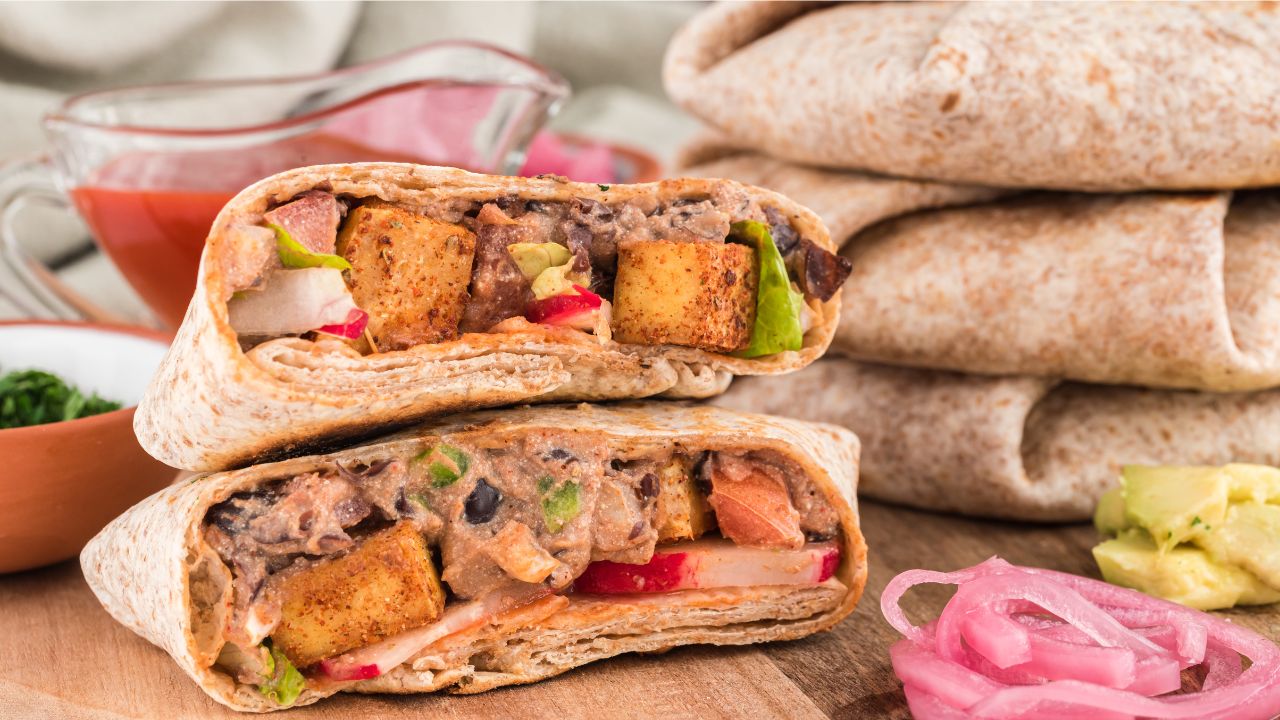
Ready for a delightful, satisfying, and fun-to-make breakfast using your favorite veggies and beans? While this Mexican-inspired recipe calls for black beans, just about any beans will do. So get ready to roll up your sleeves and have some fun preparing these tasty Vegan Breakfast Crunchwraps. It takes a little handwork to make these, but you can do it in less than a minute once you get the hang of it. Plus, watching them come together and then indulging in their crunchy, gooey goodness might be the definition of beany-breakfast-fun!
5. Turmeric Freekeh Breakfast Bowl with Chickpeas and Beets
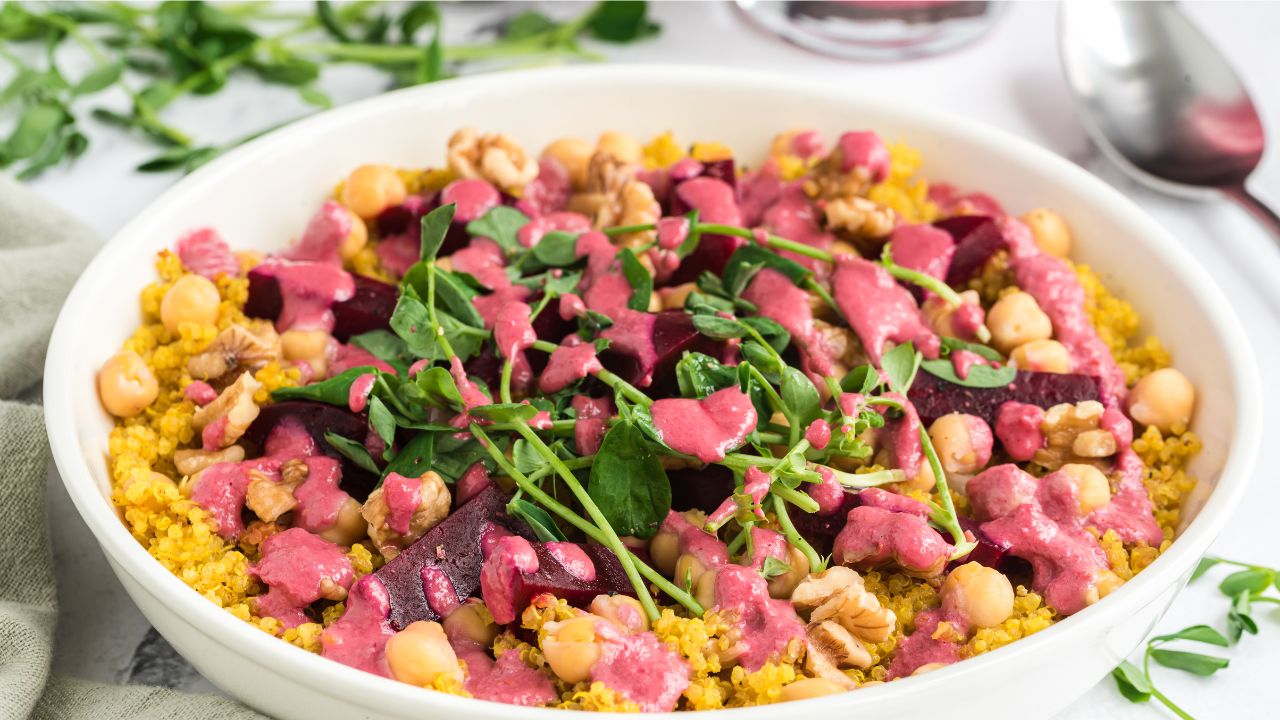
Starting your day with beans can open up a whole new world of breakfast possibilities. Enjoy the colorful and nutritious Turmeric Freekeh Breakfast Bowl with Chickpeas and Beets, and discover how easy and delightful it is to enjoy chickpeas (along with other healthy veggies) right at the start of your day. With the warm glow of turmeric-infused freekeh, hearty chickpeas, sweet beets, and crunchy walnuts, this dish is a fulfilling, make-ahead breakfast that’s both nourishing and exciting to dive into. Still skeptical? Try this beans for breakfast recipe yourself and see how it brightens up your morning routine.
6. FRN’s Rainbow Shakshuka with Savory Chickpea Dumplings
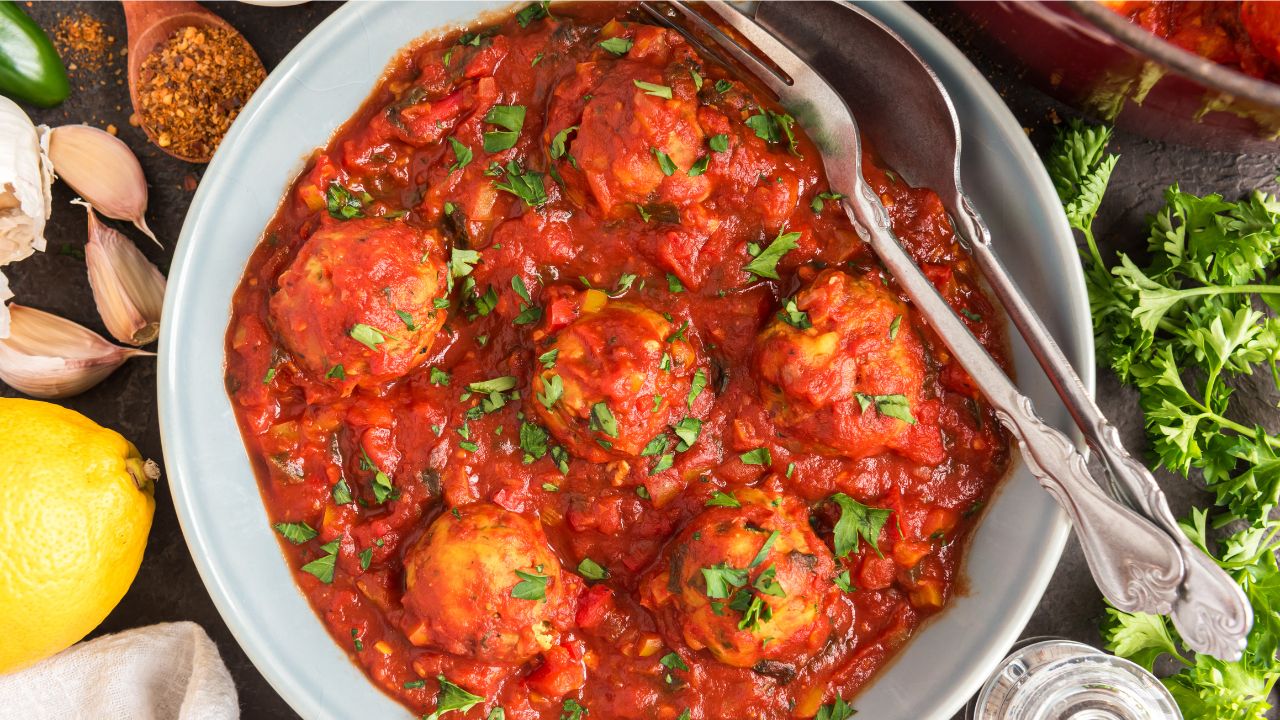
Rainbow Shakshuka with Savory Chickpea Dumplings puts a plant-based spin on the classic North African and Middle Eastern shakshuka, making beans the breakfast hero. This dish pairs protein-rich chickpea dumplings with a colorful mix of bell peppers and spinach in a savory tomato sauce, seasoned with a blend of spices. It’s a testament to the power of chickpeas as a morning staple, offering a high-protein, fiber-filled meal that’s as nourishing as it is flavorful. Our Rainbow Shakshuka is a creative twist on a breakfast classic, proving that beans can indeed be a delicious and hearty way to kick off your morning.
7. Mung Bean Scrambled “Eggs” with Veggies and Avocado
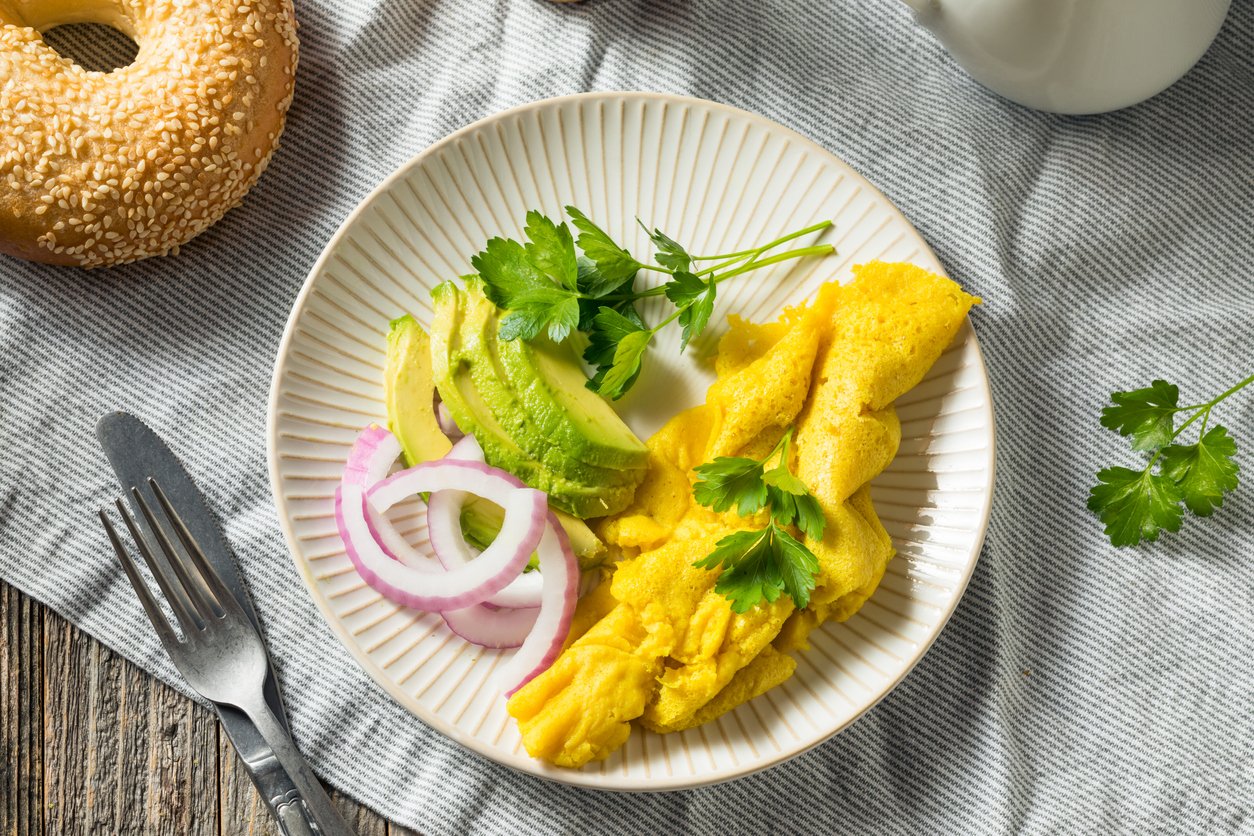
Mung Bean Scrambled “Eggs” with Veggies and Avocado is a game-changing breakfast option for anyone looking to incorporate more beans into their morning routine. This innovative dish uses mung beans to create a scramble that closely mimics the texture and versatility of traditional scrambled eggs, making it an excellent choice for those on a plant-based diet or anyone aiming to reduce their egg consumption. Packed with protein and fiber, mung beans offer a nutritious start to the day, keeping you full and energized longer.
8. Breakfast Cauliflower Lentil Kitchari
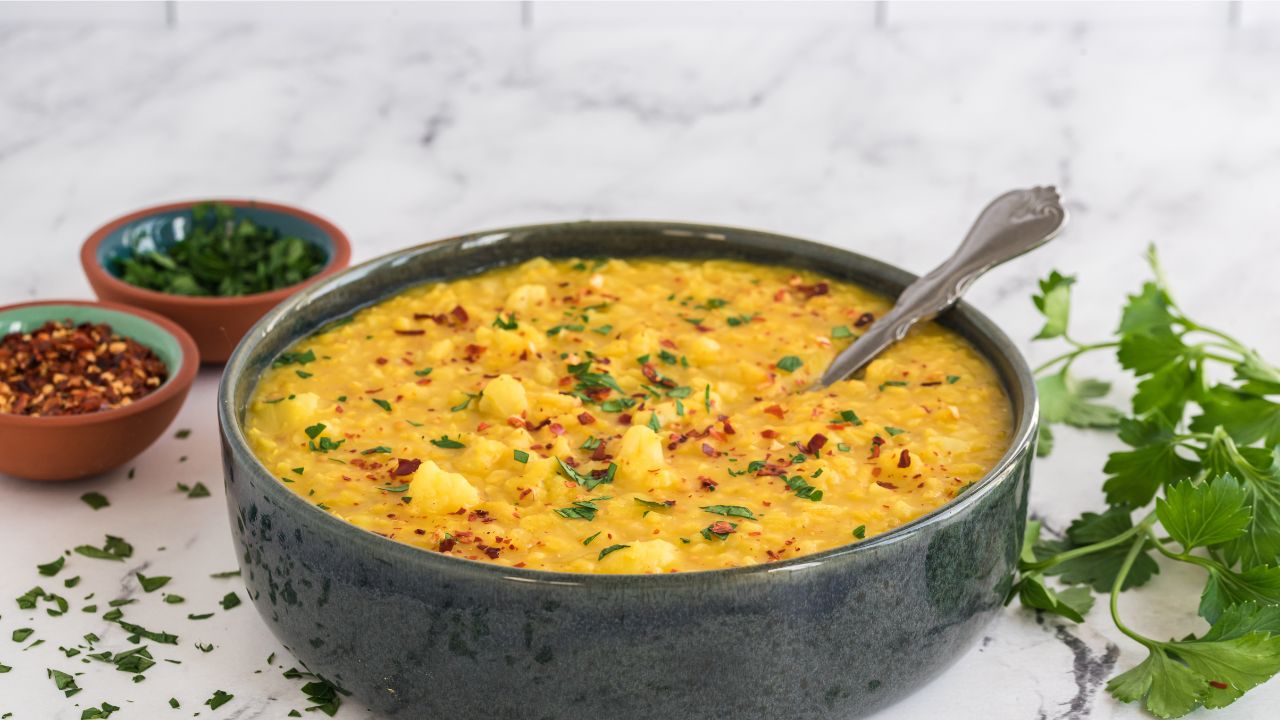
Imagine starting your day sitting at the table, admiring a warm and cozy bowl filled with revitalizing plant-based ingredients, while taking in the delicate and comforting aroma that surrounds you. Now imagine sitting peacefully, mindfully savoring each bite, and feeling positive energy fill your body in preparation for the day ahead. Sounds like a dream — or is it? Indian Ayurveda-inspired Breakfast Cauliflower Lentil Kitchari is a savory bowl that is nourishing and restorative for the mind, body, and soul. Even better, it’s delicious warm or cold, and is more flavorful the next day. Make it the night before and enjoy it in the morning for a comforting meal filled with fragrant spices, fiber-filled grains, protein-packed lentils, and healing cauliflower. Beans for breakfast can truly do it all!
Eat Beans to Break Your Fast!
Eating beans for breakfast is not as uncommon as you might think. Many cultures feature beans in morning meals (as well as throughout the day). And for good reason: They provide an important source of calories and plant-based nutrition. Try one of these recipes and discover new ways to eat beans at any time of day!
Tell us in the comments:
- What are your favorite bean dishes?
- How might you start adding beans to your breakfast?
- Which breakfast bean recipe will you try first?
Featured Image: iStock.com/Liudmila Chernetska



